AMD Radeon RX 550 review: A thrilling budget graphics card with a perplexing price
At a Glance
Expert’s Rating
Pros
- Huge e-sports performance leap over integrated graphics
- Cool and quiet
- Offers modern ecosystem and media features
Cons
- No small form factor versions at launch
- Priced too high
Our Verdict
The Radeon RX 550 delivers tremendous value to e-sports gamers and home theater PC owners, but high pricing compared to the RX 560 renders it borderline irrelevant.
The most popular games in the world don’t need a beefy graphics card.
Yes, I’m talking about e-sports. The likes of League of Legends, Dota 2, and Counter-Strike: Global Offensive dominate Twitch and Steam charts alike. There are a lot of reasons for their success, but the fact that they run on virtually any PC doesn’t hurt. Heck, you can even run e-sports games—including Overwatch—on an AMD APU’s integrated graphics if you’re okay with modest frame rates at lower resolutions.
AMD’s affordable new Radeon RX 550 is designed for folks who want more e-sports eye candy without breaking the bank, at $80 on Newegg.
Higher frame rates and resolutions mean you can see more, faster, and that extra performance can spell the difference between winning and losing in the world of competitive gaming. AMD’s latest Radeon lets you crank those graphics settings, and it includes all the helpful ecosystem conveniences found in the rest of the Radeon RX 500-series, such as native broadcasting support with Radeon Crimson ReLive, FreeSync monitor compatibility, and modern media technologies that could make the Radeon RX 550 a hit with home theater PC enthusiasts.
We haven’t seen a graphics card serve the ultra-budget market in years. But is a graphics card this cut-down worthwhile? Yes…and no.
Let’s dig in.
Meet the Radeon RX 550
You’ll find all the hardcore technical specs for the Radeon RX 550 in the chart below, but in sum they’re half that of the already modest $100 RX 560, which is launching in early May as the final release in AMD’s new Radeon RX 500 series.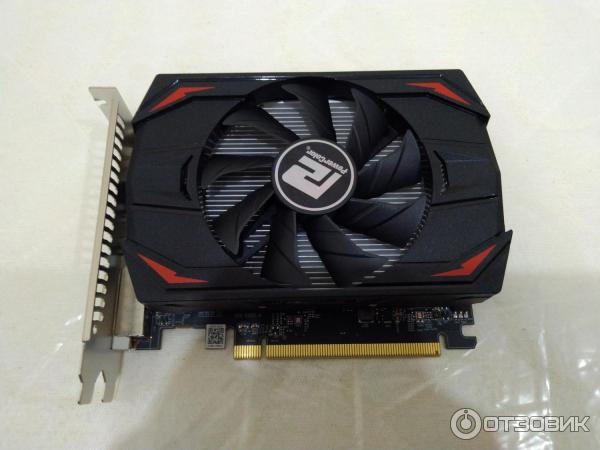 It’s one-quarter the GPU inside the $170 Radeon RX 570.
It’s one-quarter the GPU inside the $170 Radeon RX 570.
AMD
AMD’s Radeon RX 550 graphics card specs.
The Radeon RX 550’s Polaris GPU packs a mere 8 compute units and 512 stream processors, but you don’t need much horsepower to drive e-sports or home theater PCs. It hums along at a 1,100MHz base/1,183MHz boost clock, married to 2GB of GDDR5 memory with a 128-bit bus. (4GB models will also be available in limited numbers.) Those modest internals demand only modest amounts of power, however. The Radeon RX 550 is powered completely via your motherboard’s PCIe slot, with no extra power cables required. That’s a big deal for folks wanting more oomph from an existing PCs—likely a sizable portion of this card’s target audience.
AMD
Media features in AMD’s Polaris GPU.
Besides e-sports gaming capabilities, which are bolstered by compatibility with affordable FreeSync variable refresh rate displays, the Radeon RX 550 offers support for modern media technologies. The HDMI 2.0b and DisplayPort 1.4 connections can handle 4K resolution and high-dynamic-range video, while the GPU’s capable of HEVC encoding and decoding. That makes this tiny graphics card an intriguing option for a home theater PC.
The HDMI 2.0b and DisplayPort 1.4 connections can handle 4K resolution and high-dynamic-range video, while the GPU’s capable of HEVC encoding and decoding. That makes this tiny graphics card an intriguing option for a home theater PC.
AMD says to expect low-profile versions of the Radeon RX 550 “shortly after” launch, which would certainly suit itty-bitty HTPCs.
Brad Chacos/IDG
The version we’re testing today isn’t low-profile. Heck, it isn’t even as small as most 3GB GeForce GTX 1060 cards. Instead the PowerColor Red Devil Radeon RX 550 uses the same basic cooling solution as PowerColor’s RX 460, with a single fan and a plastic shroud over a small heatsink reminiscent of a stock CPU cooler. That’s not surprising. AMD didn’t create a reference version for any of the Radeon RX 500 series, and with the Radeon RX 550 being so cheap, we’d expect to see a lot of cooler reuse from manufacturers, especially in the first wave of products.
Brad Chacos/IDG
Port report.
You’ll find single connections for the aforementioned HDMI and DisplayPorts, as well as DVI-D, which is officially eradicated from AMD’s reference lineup but damned handy for older and entry-level monitors serving this price range.
Got it? Good. Let’s see how this puppy handles.
Our test system
Even though the PowerColor RX 550 is the most entry-level of entry-level video cards released in a long while, we’re still testing it on PCWorld’s dedicated GPU benchmarking PC, which is brimming with high-level hardware to eradicate bottlenecks and show unfettered graphics performance.
- Intel’s Core i7-5960X with a Corsair Hydro Series h200i closed-loop water cooler ($120 on Amazon).
- An Asus X99 Deluxe motherboard ($230 on Amazon for an updated version).
- Corsair’s Vengeance LPX DDR4 memory ($125 on Amazon), and 1,200-watt AX1200i power supply ($310 on Amazon).
- A 480GB Intel 730 series SSD ($280 on Amazon).
- Phanteks’ Enthoo Evolv ATX case ($190 on Amazon).

- Windows 10 Pro ($158 on Amazon).
This review’s going to be a bit unusual, as the stripped-down Radeon RX 550 simply isn’t intended to play AAA games at a decent clip like most graphics cards. It’s designed as a step-up from CPU integrated graphics, and heck, it doesn’t even have any direct competition in dedicated graphics. No Nvidia GeForce cards have targeted this segment since 2014’s GT 740, and AMD hasn’t offered a comparable Radeon in the U.S. since the Radeon R7 250 launch in 2013.
So instead of our usual benchmarking suite, I turned to some of the top e-sports games to test the Radeon RX 550, taking advantage of the replay feature in Dota 2 and League of Legends. For each, the charts show the last 10 minutes of a professional match, with all players leveled up and action coming fast and furious. Here are the options I used for Dota 2, which resulted in an attractive overall image:
Brad Chacos/IDG
Meanwhile, I tested Counter-Strike: Global Offensive using the FPS Benchmark mod from the Steam Workshop. All e-sports performance results were captured using FRAPS.
All e-sports performance results were captured using FRAPS.
Radeon RX 550 benchmarks
Unfortunately, I don’t have a PC with integrated graphics on hand to compare the Radeon RX 550 against. But I tested an AMD A10-7860K APU-powered machine with relatively strong integrated graphics last year, and while it was definitely capable of playing e-sports games, it required some severe compromises. You can see below how that PC held up in the games we’re testing today. Take particular note of the resolution and graphics settings listed next to each game, which were the combination required to get the games running close to the hallowed 60 frames per second standard.
Brad Chacos/IDG
The previous results from an e-sports PC powered by a high-end AMD APU.
By comparison, here’s how the PowerColor Radeon RX 550 fared in those same games. All games were tested at 1900×1200 resolution and High graphics settings. We also tested a pair of traditional AAA games at Low graphics settings to see how the card rolls outside of e-sports.
Brad Chacos/IDG
As you can see, the RX 550 delivers a vastly superior experience to even the Radeon integrated graphics in a pricier AMD APU, surpassing 100fps at far higher resolutions and graphics settings in the tested games. Not too shabby! Also not too shabby: the Radeon RX 550’s ability to handle The Division and Rise of the Tomb Raider, two of the most gorgeous games in recent memory, albeit at low settings. You’re definitely going to want a more potent graphics card if you plan on playing anything but e-sports regularly. But the Radeon RX 550 can do in a low-quality pinch.
Even better, this modest card uses modest amounts of power and generates modest amounts of heat. (Clarification update: Power measurements represent whole system power, not the GPU alone.)
Brad Chacos/IDG
Bottom line
So is a card this cut-down worthwhile? The benchmarks say yes, unequivocally, if your usage falls into its purview.
If you’re using a PC with integrated graphics and want to supercharge your e-sports experience (and dabble in other games) without topping $100, the Radeon RX 550 definitely delivers. The difference in performance is night and day, and with Polaris’s deep encoding support, you’ll be able to stream your adventures to Twitch with no problem—and streaming functionality’s built right into AMD’s Radeon Software Crimson. It’s like this card was made for e-sports or something.
There’s no reason to opt for a pricier 4GB version of the Radeon RX 550 once those become available, as none of the gaming this card is meant for would push the memory that hard. But if you wind up upgrading your monitor at some point down the line, a high refresh-rate FreeSync display like ViewSonic’s 24-inch, 75Hz VX2457-mhd ($140 on Amazon) would be a splendid, buttery-smooth companion.
Brad Chacos/IDG
On the other hand, the Radeon RX 550’s modern media features indeed make it an intriguing option for home theater PCs. Of course, many are built to be smaller rigs, something less obtrusive for the living room.
Of course, many are built to be smaller rigs, something less obtrusive for the living room.
If your needs are compatible with the first wave of full-height cards, swell! If not, here’s hoping the Radeon RX 550 indeed starts rolling out in low-profile and (maybe, please?) single-slot variants. It’s a natural fit for that form factor—and quiet as hell.
The only fly in the ointment? Price.
At $80, the Radeon RX 550 certainly isn’t expensive, and it’s more affordable than Nvidia’s ancient $100 GT 740 was—but it’s only $20 cheaper than the $100 Radeon RX 560 cards coming in early May. And if you remember back to the beginning of this review, a Radeon RX 550 is half a RX 560 under the hood. A 20 percent discount for 50 percent less performance (roughly) doesn’t sit right, especially since the extra oomph provided by the Radeon RX 460 (and soon the RX 560) enables solid near console-quality gaming at 1080p resolution.
Sure, if you know you’re only going to use the Radeon RX 550 for e-sports or watching 4K videos, the card lets you save $20 off the price of the RX 460 or RX 560. Most people should just buy the $100 card though. Which is why I’m so disappointed here.
Most people should just buy the $100 card though. Which is why I’m so disappointed here.
Brad Chacos/IDG
The Radeon RX 550 is nowhere near as versatile as the RX 460. I actually consider that a great thing. Competitive gaming is only getting more popular, and extremely budget-focused graphics card buyers have been woefully underserved by AMD and Nvidia for years. The stellar e-sports performance of this GPU excited me during benchmarking—when I assumed it would cost somewhere between $60 and $70. Itches that have been lingering for years would finally be scratched! Instead, at $80, there’s little reason to buy it over an RX 460. We’re back at square one.
I still really, really like the Radeon RX 550 and its laser-focus on HTPCs and competitive gaming. It could’ve been something special if it was just a bit cheaper. But as it stands there’s little reason to buy it unless prices shift downward by $10 or $20. Cost is very important in the sub-$100 market, even if it’s been largely underserved until now.
AMD Radeon RX 550 2GB Review — Tom’s Hardware
Skip to main content
Tom’s Hardware is supported by its audience. When you purchase through links on our site, we may earn an affiliate commission. Here’s why you can trust us.
Early Verdict
If you’re coming from Intel’s HD Graphics 530, any discrete graphics card is going to be exciting. Indeed, Radeon RX 550 looks like a great upgrade for folks limping along with CPU-based graphics. But AMD’s own Radeon RX 460 2GB is quite a bit quicker than the RX 550 in demanding games, and it only costs about $10 more. If you can live with the 460’s slight price premium and higher power consumption, that’s the card we’d buy for $90.
Pros
- +
Low power, low heat
- +
Compact form factor
- +
Serviceable 1080p performance
- +
No auxiliary power connector
Today’s best MSI RX 550 Aero ITX 2GB deals
No price information
Check Amazon
AMD Radeon RX 550 2GB
Radeon RX 550 is AMD’s first graphics card based on new silicon since its Polaris 11-based Radeon RX 460. The company says RX 550 is 1080p-capable in a number of popular e-sports games, adding that the product’s compact dimensions and low power also endear it to home-theater PCs.
The company says RX 550 is 1080p-capable in a number of popular e-sports games, adding that the product’s compact dimensions and low power also endear it to home-theater PCs.
Fittingly, the RX 550 slides in behind AMD’s just-announced Radeon RX 560 and starts at $80. That’s an incredibly important price point. In fact, as recently as last year, our Best Graphics recommendations included the $90 Radeon R7 360. Its disappearance forced us up the stack to Radeon RX 460, which started life at $110 last August.
Can Radeon RX 550 carve out a spot on the list of Tom’s Hardware-approved upgrades by serving up viable performance for less money than some of our past picks?
Meet Polaris 12
AMD’s older Radeon RX 460 wields 896 Stream processors. The just-announced Radeon RX 560 bumps that to 1024 Stream processors operating at even higher clock rates. When it arrives next month, we expect the RX 560 to be even faster than its predecessor for right around $100.
This leaves room for a lower-end part like the Radeon RX 550. AMD certainly could have built it using Polaris 11 with more disabled compute units. But the company’s mobile aspirations apparently necessitated a smaller GPU with fewer transistors and a more conservative power profile.
AMD certainly could have built it using Polaris 11 with more disabled compute units. But the company’s mobile aspirations apparently necessitated a smaller GPU with fewer transistors and a more conservative power profile.
Polaris 12, code-named Lexa and based on a fourth-gen GCN architecture, is that processor. Composed of 2.2 billion transistors and measuring 101 square millimeters, it’s frankly not much smaller than Polaris 11. However, AMD plans to use it in configurations that wouldn’t have made sense from a larger chip.
In its entirety, Polaris 12 exposes 10 Compute Units organized into two Shader Engines capable of two triangles/clock, similar to Polaris 11 but with fewer CUs per Shader Engine. Radeon RX 550, specifically, uses an implementation with eight of those 10 Compute Units enabled, adding up to 512 Stream processors and 32 texture units.
The chip’s back-end is proportioned more generously, maintaining Polaris 11’s 16 ROPs, aggregate 128-bit memory bus, and 7 Gb/s GDDR5 able to move up to 112 GB/s. Whereas Polaris 11 comes with 1MB of L2 cache, however, Polaris 12 is down to 512KB.
Whereas Polaris 11 comes with 1MB of L2 cache, however, Polaris 12 is down to 512KB.
| Radeon RX 550 | Radeon R7 260X | Radeon RX 460 | |
|---|---|---|---|
| Shader Units | 512 | 896 | 896 |
| ROPs | 16 | 16 | 16 |
| GPU | Polaris 12 | Bonaire | Polaris 11 |
| Transistors | 2.2 Billion | 2.08 Billion | 3 Billion |
| Memory Size | 2GB | 2GB | 2/4GB |
| Interface | 128-bit | 128-bit | 128-bit |
| GPU Clock Rate (MHz) | 1100+ | 1100 | 1090 |
| Memory Clock Rate (MHz) | 1750 | 1625 | 1750 |
AMD’s official specification for Radeon RX 550 calls for a 1100 MHz base clock rate and 1183 MHz boost frequency, though some partners will undoubtedly configure their boards differently.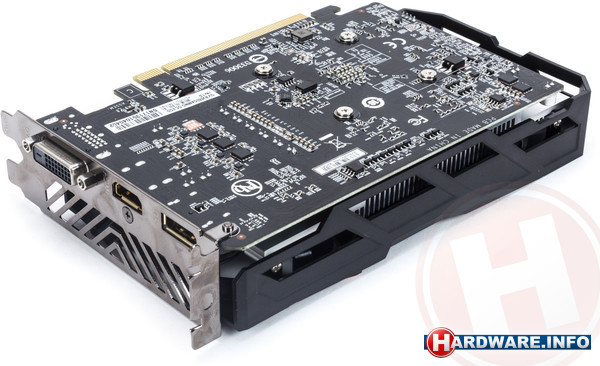 A 50W ceiling exempts the RX 550 from needing an auxiliary power connector, and even at overclocked frequencies you shouldn’t have any issue staying under the motherboard slot’s specified current limit.
A 50W ceiling exempts the RX 550 from needing an auxiliary power connector, and even at overclocked frequencies you shouldn’t have any issue staying under the motherboard slot’s specified current limit.
We are told that AMD has no plans to put any other configuration of Polaris 12 on a desktop graphics card, allowing the company to pursue mobile market share with other variants of this GPU.
Particularly relevant to Polaris 12 are some of the media and connectivity features specific to AMD’s fourth-gen GCN GPUs. For more information on the architecture’s display control and fixed-function accelerators, check out this page of our Radeon RX 480 8GB review.
The die markings made us do a double-take. «Made in Taiwan» doesn’t indicate that Polaris 12 came from GlobalFoundries, after all. Further, the codes and font also seemed familiar from Nvidia’s various processors. But it turns out that this is due to the packaging step, where the die is installed onto the GPU package.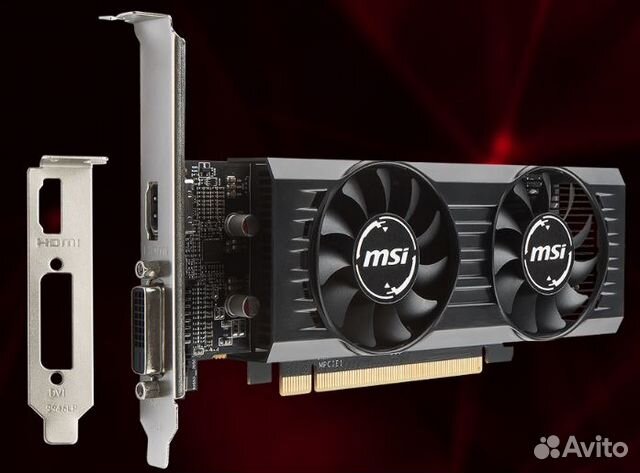 A company called ASE, which is one of the world’s largest IC assemblers, handles the process, and it has offices in Taiwan. Mystery solved.
A company called ASE, which is one of the world’s largest IC assemblers, handles the process, and it has offices in Taiwan. Mystery solved.
MORE: Best Graphics Cards
MORE: Desktop GPU Performance Hierarchy Table
MORE: All Graphics Content
- 1
Current page:
AMD Radeon RX 550 2GB
Next Page MSI RX 550 Aero ITX 2GB
Tom’s Hardware is part of Future US Inc, an international media group and leading digital publisher. Visit our corporate site .
©
Future US, Inc. Full 7th Floor, 130 West 42nd Street,
New York,
NY 10036.
Sapphire Radeon RX550 Pulse 2GB review — Is it still relevant today?
Home » Sapphire Radeon RX550 Pulse 2GB review – Is it still relevant today?
Zhi Cheng
01/07/2018
0
3.3K views
AMD’s released their flagship Vega based graphics card for the market in late August last year. However, it was rather odd to see them only releasing their new Vega based graphics card for the high performance segment, while leaving the mainstream and entry portions to their Polaris 11 and 12 models (RX500 series). Why did they not replace the whole series of graphics card with a new and improved architecture across different market segments?
However, it was rather odd to see them only releasing their new Vega based graphics card for the high performance segment, while leaving the mainstream and entry portions to their Polaris 11 and 12 models (RX500 series). Why did they not replace the whole series of graphics card with a new and improved architecture across different market segments?
It seems to us that they were saving hype of their entry/mainstream Vega chips for their Ryzen based “Raven Ridge” APUs. Definitely, these APUs did not disappoint in terms of their performance. Meanwhile, they can also focus on the design and engineering of the new next generation 7nm Vega graphics card to compete with their fierce competitors in the other camp.
With the movements of the GPU market in the past year, and the impending release of the next generation graphics card, will the lower end Polaris based graphics card still make sense for consumers? Would system builders just go ahead with a Ryzen “Raven Ridge” APU instead, rather than spending more on a dedicated graphics card? We have the Sapphire Radeon RX550 Pulse 2GB Graphics Card with us today to help us with the questions we have today.
The Radeon RX550 GPU from AMD is developed based on AMD’s Polaris 12 architecture. It is positioned as an entry level graphics card that promises graphics compute efficiency. Unlike the higher end Polaris 11 cards, such as the RX570 and RX580, the Polaris 12 also consumes much less power than the Polaris 11 and its predecessors. In fact, its typical board power is only rated at 50W.
| GPU | 512 Stream Processors 14 nm 4th Graphics Core Next (GCN) 1206 MHz Boost Engine Clock |
| Memory | 128 bit Memory Bus GDDR5 Memory Type 1500 MHz, 6000 MHz Effective 2 GB Size |
| BIOS Support | UEFI BIOS |
| Displays | Maximum 3 Outputs |
| Output | 1 x DVI-D 1 x HDMI 1 x DisplayPort 1.4 |
| Resolution | 5120×2880 (60Hz) Pixel DisplayPort Resolution 2560×1600 (60Hz) Pixel Dual Link DVI Resolution 4096×2160 (60 Hz) HDMI Resolution |
| API | OpenGL® 4. 5 5OpenCL 2.0 DirectX® 12 Shader Model 5.0 |
| Feature | FreeSync Technology AMD Eyefinity AMD Xconnect ready DirectX™ 12 Optimized HDR Ready Frame Rate Target Control Intelligent Fan Control III Radeon Chill Radeon Relive |
| Cooling | Single fan |
| Form Factor | 1.5 Part Slot Occupied 158(L)X 112(W)X 28 (H) Dimension /mm |
| Power Consumption | <65W |
| OS | Windows 10 Windows 7 |
| System Requirement | 400 Watt Power Supply (Suggestion) Blue-ray™ / HD DVD playback requires Blu-ray / HD DVD drive. PCI Express® 2.0 or higher version based PC is required with one X16 lane graphics slot available on the motherboard in order for the card to be compatible with. |
Sapphire Radeon RX550 Pulse 2GB
1 x Display Port, 1 x HDMI Port and 1 x DVI Port
The Sapphire Radeon RX550 2GB looks fairly simple. It has a single fan that cools the whole graphics card unit. Interestingly, the fan doesn’t even spin most of the times, unless you are actually in a game. This is possible because the AMD Radeon RX550 is really that power efficient and cool. Such a setting makes this graphics card a great choice for small form factor computers. This is also great for those who are really sensitive to fan noise, as it’s literally silent while idle.
It has a single fan that cools the whole graphics card unit. Interestingly, the fan doesn’t even spin most of the times, unless you are actually in a game. This is possible because the AMD Radeon RX550 is really that power efficient and cool. Such a setting makes this graphics card a great choice for small form factor computers. This is also great for those who are really sensitive to fan noise, as it’s literally silent while idle.
Test Setup
| Specifications | Hardware |
| CPU | Ryzen 5 2400G, Ryzen 3 2200G |
| RAM | G.Skill Sniper X DDR4 3400 CL16-16-16-36 2 x 8GB DDR4 Kit |
| Storage | Samsung 850 Evo M. 2 SATA 250GB SSD 2 SATA 250GB SSD |
| GPU | Vega 11, Vega 8, Sapphire Pulse RX550 2GB |
| Motherboard | MSI B350I PRO AC |
| CPU Cooler | AMD Wraith Stealth Cooler (Stock) |
| OS | Windows 10 Pro 64 bit |
| Drivers | Radeon Software Adrenaline Edition 18.5.1 |
We’ve placed the Sapphire Radeon RX550 within an AMD Ryzen “Raven Ridge” APU system in order to do a direct comparison with the performance of the Vega 11 and Vega 8 systems. This way, we can also compare between the performance difference between the Vega and Polaris architecture with the RX550 and Vega 8, as they have the same number of stream processors. However, do take note that the test may not be as accurate as it should be, due to the fact that the Vega 8 on the Ryzen APU does not have dedicated Video Memory, and has to rely on slower DDR4 system memory. The RX550 on the other hand is dedicated with 2GB of fast GDDR5 video memory.
However, do take note that the test may not be as accurate as it should be, due to the fact that the Vega 8 on the Ryzen APU does not have dedicated Video Memory, and has to rely on slower DDR4 system memory. The RX550 on the other hand is dedicated with 2GB of fast GDDR5 video memory.
Benchmark Results
Dota 2 results for the RX550 was somewhat expected. As the Radeon RX550 has 512 stream processors as compared to 704 stream processors in the Vega 11, the results should be worse than what the Ryzen 5 2400G with Vega 11 provide. We can also see that there isn’t much difference in performance between the Polaris based RX550 graphics card and the Vega 8 GPU found on the Ryzen 3, as they both have 512 stream processors.
Interestingly, the benchmark results for Final Fantasy XV was very much different when compared to those from Dota 2. The Ryzen 5 2400G with Vega 11 was expected to perform the best, but both setups equipped with the Radeon RX550 were actually on par, despite having lesser stream processors.
It could be likely that memory performance became a bottleneck for this game with the Vega 11 on the Ryzen 5 APU. Therefore, it was unable to perform to its fullest.
The Rise of the Tomb Raider benchmark made the difference in performance even more apparent. It seems like video memory place a huge part to the performance of graphics card in today’s games.
Conclusion
The benchmark results speak for themselves. It is obvious that the Radeon RX550 Graphics Card has somewhat been made obsolete by the new Ryzen “Raven Ridge” APUs, especially the Vega 11. The GPU within the Ryzen 5 2400G was able to perform better than the RX550 in Dota 2, providing more FPS. It is simply just amazing to see all that performance just coming from an integrated APU SoC.
However, we have also taken note that the type of game mattered a lot as well, as the Radeon RX550 seems to perform better in both Final Fantasy XV and Rise of the Tomb Raider benchmarks.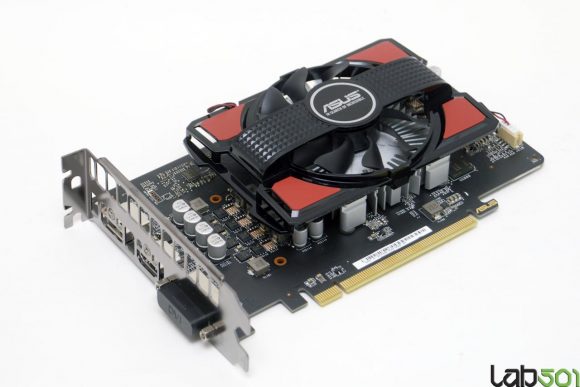 There are definitely still good reasons for the adoption of this card.
There are definitely still good reasons for the adoption of this card.
Firstly, since APUs do not have dedicated video memory for their Vega graphics processors, they have to rely on the slower system memory. The results also have shown that the Radeon RX550 still performed better than the Ryzen APUs in games where more video memory is required, such as Final Fantasy XV. This could highly likely be caused by the bottleneck by the speed of the system memory. Despite having more stream processors based on an improved architecture, the Radeon RX550 still manages to hold its ground.
Speaking from a more practical point of view, if you are purchasing a new budget gaming system, you will be better off purchasing a new Ryzen APU, as it is of a great deal of value for the performance that comes with it.
However, if you have pre-built desktop without a graphics card and would like to upgrade your system in order to play some games, the Radeon RX550 is still a great choice. Without the need for an additional 6-pin power cable plugged in, it should be easily compatible with most systems out there. The Radeon RX550 is still one of the cheapest graphics card capable of gaming that’s available in the market anyway, and it could take some time before the next generation of graphics card will be released. Therefore, perhaps the purchase of a new Radeon RX550 graphics card, such as the Sapphire Radeon RX550 Pulse 2GB wouldn’t be such a bad choice after all.
The Radeon RX550 is still one of the cheapest graphics card capable of gaming that’s available in the market anyway, and it could take some time before the next generation of graphics card will be released. Therefore, perhaps the purchase of a new Radeon RX550 graphics card, such as the Sapphire Radeon RX550 Pulse 2GB wouldn’t be such a bad choice after all.
Tags
AMD APU featured Graphics Card Graphics Card PC DIY Polaris 12 RX550 Ryzen Sapphire Sapphire Radeon RX550 Pulse 2GB
Zhi Cheng
I am The Tech Revolutionist.
Share This
Previous Article
GIGABYTE’s new B450 Aorus motherboard, and RGB RAM at half the price!
Next Article
New Gundam Breaker Review — New formula to justify a makeover?
is the best budget gaming graphics card? GECID.com. Page 1
::>Video cards
>2017
> ASUS RX550-2G
16-08-2017
Page 1
Page 2
One page
In mid-April, the AMD Radeon RX 500 series of video cards was announced, which by and large is a rebranding of models from the AMD Radeon RX 400 line. But among the four graphics adapters, there was one absolute novelty — AMD Radeon RX 550 , which has no analogue in the previous series. It is based on the AMD Polaris 12 GPU with support for 512 stream processors, 32 texture units and 16 raster units. It can be paired with 2 or 4 GB of GDDR5 memory with a 128-bit bus.
But among the four graphics adapters, there was one absolute novelty — AMD Radeon RX 550 , which has no analogue in the previous series. It is based on the AMD Polaris 12 GPU with support for 512 stream processors, 32 texture units and 16 raster units. It can be paired with 2 or 4 GB of GDDR5 memory with a 128-bit bus.
With a recommended price of $79, the new product is positioned as an excellent option for budget gaming systems and faster processing of multimedia content (compared to the integrated graphics core). In addition, it will be an excellent option for home theaters with support for HDR displays, 4K video (at 60 Hz) and HEVC content. It also supports such useful proprietary technologies as FreeSync 2, Radeon Chill, Radeon ReLive and others.
For a more convenient comparison of AMD Radeon RX 550 with its neighbors in the internal model range, we present a summary table of characteristics.
|
Model |
AMD Radeon RX 550 |
AMD Radeon RX 460 |
AMD Radeon RX 560 |
AMD Radeon RX 470 |
AMD Radeon RX 570 |
AMD Radeon RX 480 |
AMD Radeon RX 580 |
|
GPU |
AMD Polaris 12 |
AMD Polaris 11 |
AMD Polaris 11 |
AMD Polaris 10 |
AMD Polaris 20 |
AMD Polaris 10 |
AMD Polaris 20 |
|
Microarchitecture |
4th Generation AMD GCN |
||||||
|
Crystal area, mm 2 |
101 |
123 |
123 |
232 |
232 |
232 |
232 |
|
Technical process, nm |
14 |
||||||
|
Number of computing units |
8 |
14 |
16 |
32 |
32 |
36 |
36 |
|
Number of stream processors |
512 |
896 |
1024 |
2048 |
2048 |
2304 |
2304 |
|
Number of texture units |
32 |
56 |
64 |
128 |
128 |
144 |
144 |
|
Number of raster blocks |
16 |
16 |
16 |
32 |
32 |
32 |
32 |
|
GPU clock frequency, MHz |
1100 / 1183 |
1090 / 1200 |
1175 / 1275 |
926 / 1206 |
1168 / 1244 |
1120 / 1266 |
1257 / 1340 |
|
Video memory type |
GDDR5 |
||||||
|
Volume, GB |
2 / 4 |
2 / 4 |
2 / 4 |
4 / 8 |
4 / 8 |
4 / 8 |
4 / 8 |
|
Effective memory frequency, MHz |
7000 |
7000 |
7000 |
6600 |
7000 |
7000 / 8000 |
7000 / 8000 |
|
Memory bus width, bit |
128 |
128 |
128 |
256 |
256 |
256 |
256 |
|
Bandwidth, GB/s |
112 |
112 |
112 |
211 |
224 |
224 / 256 |
224 / 256 |
|
Performance level, TFLOPS |
1. |
2.15 |
2.6 |
4.9 |
5.1 |
5.8 |
6.2 |
|
TDP value, W |
50 |
75 |
80 |
120 |
150 |
150 |
185 |
|
Estimated cost, $ |
79 |
119 |
99 |
179 |
169 |
199 / 239 |
199 / 229 |
All prices for Asus%2BRadeon%2BRX%2B550%2BRX550-2G
The key competitor of AMD Radeon RX 550 in this price segment is NVIDIA GeForce GT 1030, which is characterized by fewer structural elements in the graphics processor (384 CUDA -cores, 24 texture and 16 raster units) and using a 64-bit bus. As a result, the bandwidth of the reference version is only 48 GB / s instead of 112 GB / s for the Radeon RX 550. We will check how much this will affect in practice when analyzing the results, but for now let’s take a closer look at model ASUS Radeon RX 550 2GB (RX550-2G) , on the basis of which we will study the capabilities of the budget representative of the new series.
As a result, the bandwidth of the reference version is only 48 GB / s instead of 112 GB / s for the Radeon RX 550. We will check how much this will affect in practice when analyzing the results, but for now let’s take a closer look at model ASUS Radeon RX 550 2GB (RX550-2G) , on the basis of which we will study the capabilities of the budget representative of the new series.
Specification
|
Model |
ASUS Radeon RX 550 2GB (RX550-2G) |
|
Technical process, nm |
14 (FinFET) |
|
GPU |
AMD Polaris 12 |
|
Microarchitecture |
AMD Polaris |
|
Number of stream processors |
512 |
|
Number of texture units |
32 |
|
Number of raster blocks |
16 |
|
GPU dynamic frequency, MHz |
1183 |
|
Video memory type |
GDDR5 |
|
Volume, GB |
2 |
|
Effective frequency, MHz |
7000 |
|
Bus width, bit |
128 |
|
Internal interface |
PCI Express 3. |
|
External interfaces |
1 x DVI-D |
|
Additional power connector |
— |
|
Recommended power supply, W |
400 |
|
Dimensions, mm |
182 x 112 x 43 |
|
Drivers |
Latest drivers can be downloaded from the ASUS website or from the website of the manufacturer of GPU |
|
Manufacturer website |
ASUS |
Packing and contents
The ASUS RX550-2G video card came to us for testing in its formal packaging — in this form you can also find it on store shelves. The box is quite informative: you can find an image of the novelty itself, its interface panel and key advantages on it. Only GPU and memory clocks are missing.
Only GPU and memory clocks are missing.
On one of the sides, the manufacturer made recommendations for the power supply used. Its minimum power should not be lower than 400 watts. You can see the real power consumption of our entire test bench with the ASUS Radeon RX 550 2GB graphics adapter on the last graph of the test unit.
Package only includes user manual and software CD.
Appearance
The design of the ASUS Radeon RX 550 2GB video card is quite simple and familiar for budget branded models. The active cooling system covers only the graphics processor itself and partly the memory chips, and the elements of the power subsystem are blown by air currents from the main fan due to the special shape of the radiator. Therefore, it is desirable that additional air circulation be organized in the case.
The power supply subsystem of the novelty is made according to a 4 + 1-phase design using high-quality element base: solid capacitors and ferrite chokes (Super Alloy Power II concept). In addition, the assembly took place on a fully automatic ASUS Auto-Extreme Technology line, so the quality of workmanship does not raise any questions. The DIGI + ASP1206 microcircuit acts as a PWM controller.
In addition, the assembly took place on a fully automatic ASUS Auto-Extreme Technology line, so the quality of workmanship does not raise any questions. The DIGI + ASP1206 microcircuit acts as a PWM controller.
On the back of the circuit board are several controllers and a number of electrical components. And on one of the screws securing the cooling system, you can see a protective sticker, damage to which will void the warranty. Also, this photo clearly shows the absence of an additional PCIe power connector and the use of only 8 lines of the PCI Express 3.0 x16 interface. This can cause compatibility and stability issues when paired with very old systems.
The set of external interfaces is pleased to note the support of three popular digital ports: DVI-D, HDMI and DisplayPort. The maximum supported screen resolution is declared at 5120 x 2880. Note that NVIDIA GeForce GT 1030 series models usually have only two available ports — in some cases this can cause inconvenience.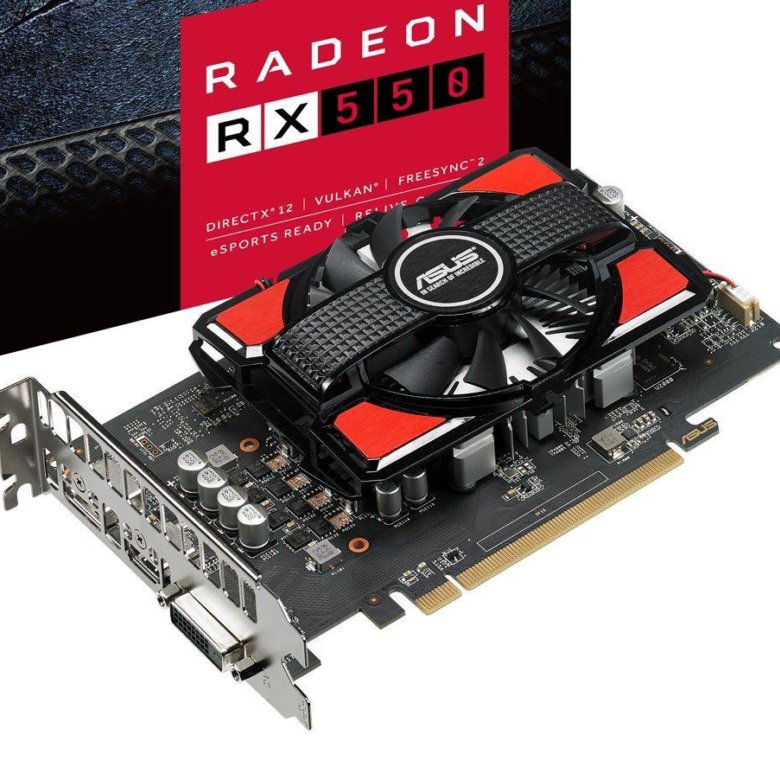
The GPU-Z utility prompts not only information about the structure of the used GPU and its clock frequency, but also about the manufacturer of the GDDR5 memory chips (Elpida).
It is curious that in the proprietary GPU Tweak II utility for this model there is an “OC” profile, in which the dynamic frequency rises from 1183 to 1203 MHz (an increase of 1.7%). However, it is not mentioned on the official page.
Cooling System
The ASUS Radeon RX 550 2GB (RX550-2G) graphics card cooling system uses a very simple design: it consists of an aluminum heatsink and an axial fan. The heatsink does not directly contact the memory chips, but only partially covers some of the chips. But due to the shape of the blades, the air flow from the fan is also directed to the elements of the power subsystem.
The turntable itself is claimed to be IP5X dust resistant.
After turning on, the fan constantly spins at a speed of approximately 2280 rpm, creating a quite comfortable noise background, below the average level. At the same time, the temperature of the GPU at maximum load rises to 71 ° C.
At the same time, the temperature of the GPU at maximum load rises to 71 ° C.
You can extract a lot of useful information from the BIOS of a video card. For example, the maximum rotation speed of the fan is 4600 rpm and the maximum temperature is 93°C. If it rises to 97 ° C, then the system will simply turn off.
In idle mode, the fan rotates at the same speed, which allows the GPU temperature to drop to 29°C.
As you can see, the cooling system generally copes with its task, because even with the maximum load on the video card, there is still a 22-degree margin of safety. The only pity is that the fan rotates at a constant speed even at low load on the GPU — this does not cause acoustic discomfort, but it can accelerate bearing wear. No extraneous sounds in the form of an annoying squeak of throttles were noticed during testing.
specs and benchmarks in 13 games and 1 benchmark
AMD started selling the Radeon RX 550 on April 20, 2017 for a suggested price of $79. This is a desktop video card based on the GCN 4.0 architecture, with a 14 nm process technology. It has 2 GB of GDDR5 memory with a frequency of 1750 MHz, a 128-bit bus, which provides a bandwidth of 7 Gb / s.
This is a desktop video card based on the GCN 4.0 architecture, with a 14 nm process technology. It has 2 GB of GDDR5 memory with a frequency of 1750 MHz, a 128-bit bus, which provides a bandwidth of 7 Gb / s.
The card occupies 2 slots, connected via PCIe 3.0 x8 interface. The length of the reference version is 145 mm. The card does not require additional power supply, the declared maximum power consumption is 50 watts.
Specifications
GPU
- GPU name
- Lexa
- GPU option
- Lexa PRO (215-0
8)
- Architecture
- GCN 4.0
- Manufacturer
- GlobalFoundries
- Process
- 14 nm
- Number of transistors
- 2200 million
- Crystal area
- 103 mm²
Graphic card
- Release date
- April 20, 2017
- Generation
- Polaris (RX 500)
- Predecessor
- Arctic Islands
- Descendant
- Vega
- Launch price
- $79
- Market price
- $74
- Data bus interface
- PCIe 3.
 0 x8
0 x8
Frequencies
- Base frequency
- 1100 MHz
- Boost frequency
- 1183 MHz
- Memory frequency
- 1750 MHz
Memory
- Memory capacity
- 2 GB
- Memory type
- GDDR5
- Memory bus
- 128 bit
- Memory speed
- 7 Gb/s
- Memory bandwidth
- 112 GB/s
Render configuration
- Shader units
- 512
- Compute modules
- 8
- Texture blocks
- 32
- Screen blocks
- 16
- L1 cache
- 16 KB
- L2 cache
- 512 KB
Rated output
- Pixel fill rate
- 18.
 93 GP/s
93 GP/s
- Texture Fill Rate
- 37.86 GT/s
- Performance FP16
- 211 GFlops
- Performance FP32
- 211 GFlops
- Performance FP64
- 75.71 GFlops
Graphics
- DirectX
- 12 (12_0)
- OpenGL
- 4.6
- OpenCL
- 2.1
- Vulcan
- 1.2
- Shader Model
- 6.4
Video card design
- Occupied slots
- 2
- Length
- 145 mm
- Heat Sink Requirements
- 50 W
- Recommended PSU power
- 250 W
- Outlets
- 1x DVI 1x HDMI 1x DisplayPort
- Power supply
- Not required
- Board number
- D090-01
- Maximum temperature
- 57 °C
- Maximum noise
- 36.
 2 dB
2 dB
FPS in games
Assassin’s Creed Valhalla
(2020)
Better than NVIDIA GeForce GTX 470, but worse than AMD Radeon HD 6870.
|
1920×1080 / Ultra / 9.3 |
2560×1440 / Ultra / 8.1 |
3840×2160 / Ultra / 5.5 |
Valorant
(2020)
Better than NVIDIA GeForce GTX 470, but worse than AMD Radeon HD 6870.
|
1920×1080 / Ultra / 40.8 |
2560×1440 / Ultra / 33. |
3840×2160 / Ultra / 29.0 |
Death Stranding
(2020)
Better than NVIDIA GeForce GTX 560, but worse than AMD Radeon HD 6870.
|
1920×1080 / Ultra / 18.5 |
2560×1440 / Ultra / 14.3 |
3840×2160 / Ultra / 8.7 |
Cyberpunk 2077
(2020)
Better than NVIDIA GeForce GTX 560, but worse than AMD Radeon RX Vega 8 (Ryzen 4000).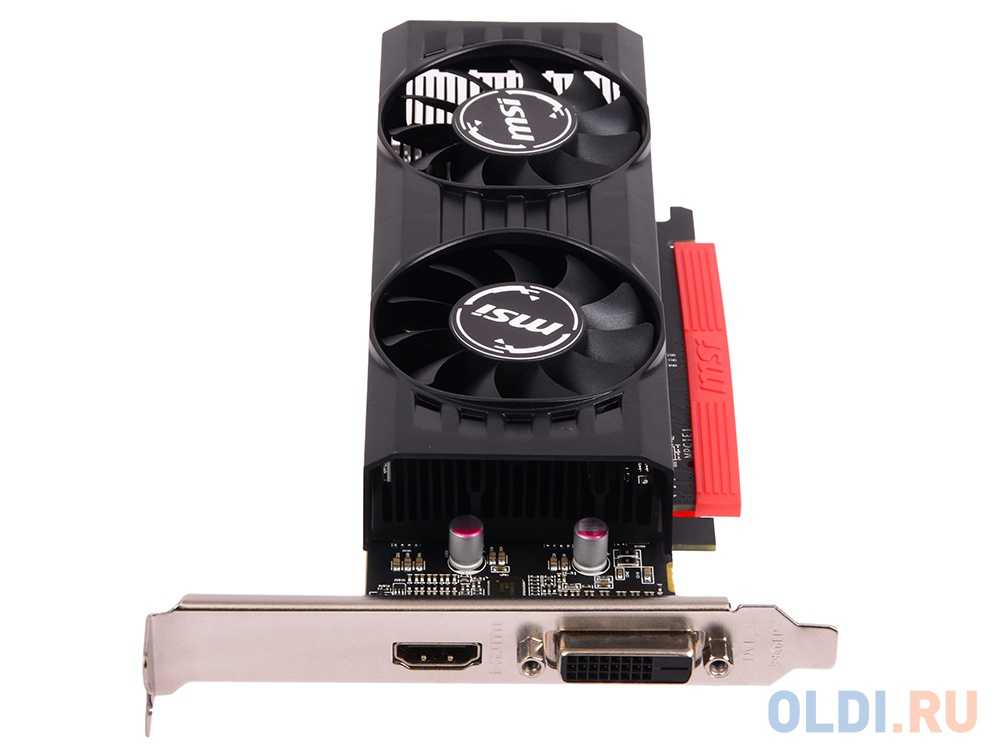
|
1920×1080 / Ultra / 9.3 |
2560×1440 / Ultra / 8.7 |
3840×2160 / Ultra / 5.7 |
Apex Legends
(2019)
Better than AMD Radeon RX 550X Mobile, but worse than NVIDIA GeForce GTX 560 Ti.
|
1920×1080 / Ultra / 18.0 |
2560×1440 / Ultra / 13.4 |
3840×2160 / Ultra / 8. |
Metro Exodus
(2019)
Better than NVIDIA GeForce GTX 560, but worse than AMD Radeon HD 6870.
|
1920×1080 / Ultra / 11.2 |
2560×1440 / Ultra / 8.7 |
3840×2160 / Ultra / 5.5 |
Red Dead Redemption 2
(2019)
Better than NVIDIA GeForce GTX 560, but worse than AMD Radeon HD 6870.
|
1920×1080 / Ultra / 9.5 |
2560×1440 / Ultra / 7. |
3840×2160 / Ultra / 5.0 |
PlayerUnknown’s Battlegrounds
(2017)
Better than NVIDIA GeForce GTX 660M, but worse than AMD Radeon RX 560X Mobile.
|
1920×1080 / Ultra / 16.1 |
2560×1440 / Ultra / 12.2 |
3840×2160 / Ultra / 7.0 |
Overwatch
(2016)
Better than NVIDIA GeForce GTX 660M, but worse than AMD Radeon RX 540.
|
1920×1080 / Ultra / 25.9 |
2560×1440 / Ultra / 18.2 |
3840×2160 / Ultra / 9.1 |
Grand Theft Auto V
(2015)
Better than AMD Radeon RX 560 Mobile, but worse than AMD Radeon RX 560 Mobile.
|
1920×1080 / Ultra / 19.1 |
2560×1440 / Ultra / 13.3 |
3840×2160 / Ultra / 6. |
The Witcher 3
(2015)
Better than NVIDIA GeForce GTX 880M, but worse than NVIDIA T500 Laptop GPU.
|
1920×1080 / Ultra / 19.4 |
2560×1440 / Ultra / 14.2 |
Counter-Strike: Global Offensive
(2012)
Better than NVIDIA GeForce GTX 560, but worse than AMD Radeon HD 6870.
|
1920×1080 / Ultra / 59.5 |
2560×1440 / Ultra / 49. |
3840×2160 / Ultra / 44.6 |
League of Legends
(2019)
Better than NVIDIA GeForce GTX 560, but worse than AMD Radeon HD 6870.
|
1920×1080 / Ultra / 111.6 |
2560×1440 / Ultra / 62.0 |
3840×2160 / Ultra / 24.8 |
Benchmark tests
Passmark: 2766 Better than NVIDIA GeForce GTX 560, but worse than AMD Radeon RX 540.
Interested to know:
Camera and microphone test.

Comparison with other graphics cards
Map 1:
Map 2:
Video reviews and tests
Error 403 The request cannot be completed because you have exceeded your quota. : quotaExceeded
If you find an error or have something to add, write in the comments. Have you had any experience with this video card? Is it worth buying such a card today?
PowerColor Red Dragon Radeon RX 550
42points
PowerColor Red Dragon Radeon RX 550
PowerColor Red Dragon Radeon RX 550
Why is PowerColor Red Dragon Radeon RX 550 better than others?
- Design requirements for heat dissipation (TDP)?
65W vs 192.73W - GPU memory speed?
1750MHz vs 1568.57MHz - OpenCL version?
2.2 vs 1.74 - Semiconductors size?
14nm vs 17.61nm - DVI outputs?
1 vs 0.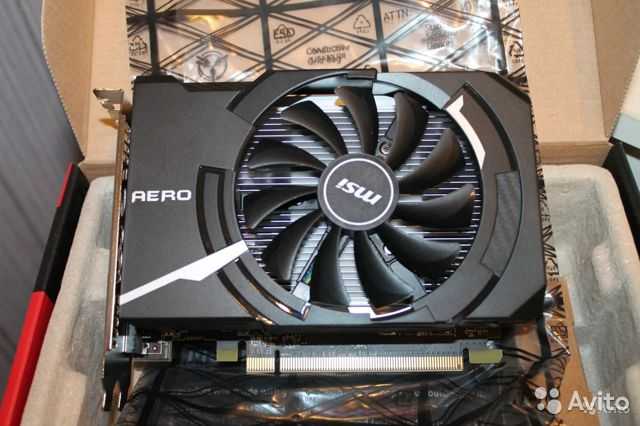 78
78 - Multi-GPU?
4 vs 2.75 - Width?
225mm vs 256.37mm
Which comparisons are the most popular?
PowerColor Red Dragon Radeon RX 550
vs
Gigabyte GeForce GTX 1050
PowerColor Red Dragon Radeon RX 550
vs
Gigabyte GeForce GTX 1050 Ti
PowerColor Red Dragon Radeon RX 550
vs
Gigabyte Radeon RX 550
PowerColor Red Dragon Radeon RX 550
vs
Nvidia GeForce GTX 750 Ti
PowerColor Red Dragon Radeon RX 550
vs
Nvidia GeForce GTX 1050 2GB0003
PowerColor Red Dragon Radeon RX 550
vs
Nvidia GeForce GTX 1060
PowerColor Red Dragon Radeon RX 550
vs
Nvidia GeForce GTX 550 Ti
PowerColor Red Dragon Radeon RX 550
vs
PowerColor Red Gigabyte Aorus GeForce RTX 3090 Master
PowerColor Red Dragon Radeon RX 550
vs
Nvidia Geforce GTX 1660 Super
Price comparison
User reviews
Performance
1.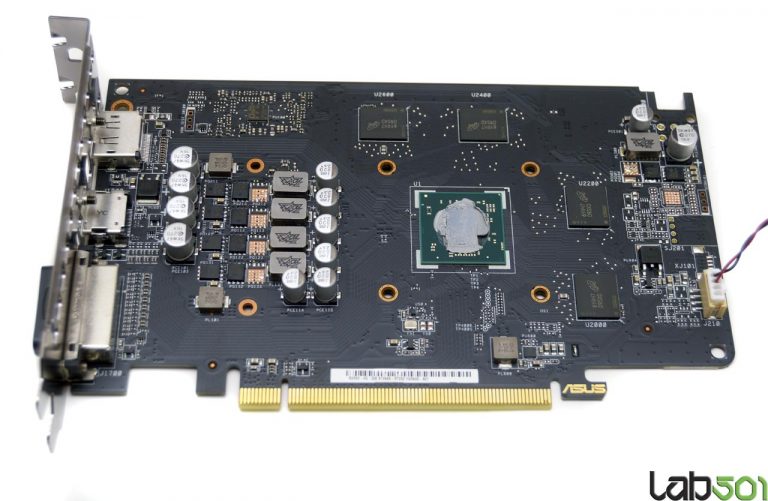 GPU clock speed
GPU clock speed
1100MHz
The graphics processing unit (GPU) has a higher clock speed.
2.turbo GPU
1190MHz
When the GPU is running below its limits, it can jump to a higher clock speed to increase performance.
3.pixel speed
19.04 GPixel/s
The number of pixels that can be displayed on the screen every second.
4.flops
1.22 TFLOPS
FLOPS is a measurement of GPU processing power.
5.texture size
38.1 GTexels/s
Number of textured pixels that can be displayed on the screen every second.
6.GPU memory speed
1750MHz
Memory speed is one aspect that determines memory bandwidth.
7.shading patterns
Shading units (or stream processors) are small processors in a video card that are responsible for processing various aspects of an image.
8.textured units (TMUs)
TMUs accept textured units and bind them to the geometric layout of the 3D scene. More TMUs generally means texture information is processed faster.
9 ROPs imaging units
ROPs are responsible for some of the final steps of the rendering process, such as writing the final pixel data to memory and performing other tasks such as anti-aliasing to improve the appearance of graphics.
Memory
1.memory effective speed
7000MHz
The effective memory clock frequency is calculated from the memory size and data transfer rate. A higher clock speed can give better performance in games and other applications.
2.max memory bandwidth
112GB/s
This is the maximum rate at which data can be read from or stored in memory.
3.VRAM
VRAM (video RAM) is the dedicated memory of the graphics card. More VRAM usually allows you to run games at higher settings, especially for things like texture resolution.
More VRAM usually allows you to run games at higher settings, especially for things like texture resolution.
4. memory bus width
128bit
Wider memory bus means it can carry more data per cycle. This is an important factor in memory performance, and therefore the overall performance of the graphics card.
5. GDDR memory versions
Later versions of GDDR memory offer improvements such as higher data transfer rates, which improve performance.
6. Supports memory troubleshooting code
✖PowerColor Red Dragon Radeon RX 550
Memory troubleshooting code can detect and fix data corruption. It is used when necessary to avoid distortion, such as in scientific computing or when starting a server.
Functions
1.DirectX version
DirectX is used in games with a new version that supports better graphics.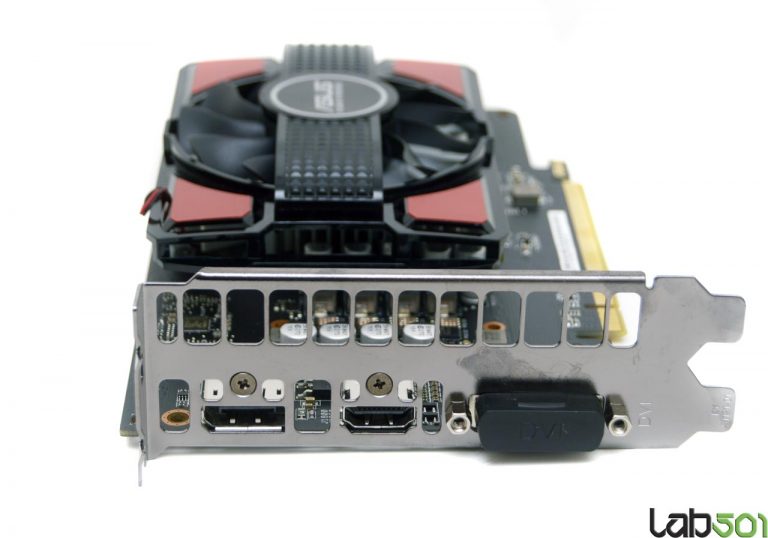
2nd version of OpenGL
The newer version of OpenGL, the better graphics quality in games.
OpenCL version 3.
Some applications use OpenCL to use the power of the graphics processing unit (GPU) for non-graphical computing. Newer versions are more functional and better quality.
4. Supports multi-monitor technology
✔PowerColor Red Dragon Radeon RX 550
The video card is capable of connecting multiple displays. This allows you to set up multiple monitors at the same time to create a more immersive gaming experience, such as a wider field of view.
5. GPU temperature at boot
Unknown. Help us offer a price.
Lower boot temperature — this means that the card generates less heat and the cooling system works better.
6.supports ray tracing
✖PowerColor Red Dragon Radeon RX 550
Ray tracing is an advanced light rendering technique that provides more realistic lighting, shadows and reflections in games.
7.Supports 3D
✖PowerColor Red Dragon Radeon RX 550
Allows you to view in 3D (if you have a 3D screen and glasses).
8.supports DLSS
✖PowerColor Red Dragon Radeon RX 550
DLSS (Deep Learning Super Sampling) is an AI based scaling technology. This allows the graphics card to render games at lower resolutions and upscale them to higher resolutions with near-native visual quality and improved performance. DLSS is only available in some games.
9. PassMark result (G3D)
Unknown. Help us offer a price.
This test measures the graphics performance of a graphics card. Source: Pass Mark.
Ports
1.has HDMI output
✔PowerColor Red Dragon Radeon RX 550
Devices with HDMI or mini HDMI ports can stream HD video and audio to the connected display.
2.

 2
2 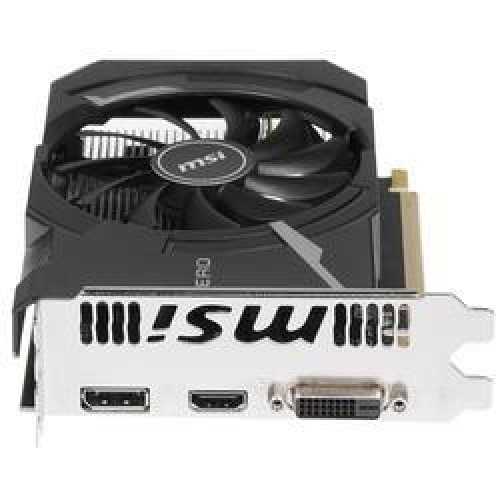 0 x16 (x8)
0 x16 (x8)  4
4
 0
0
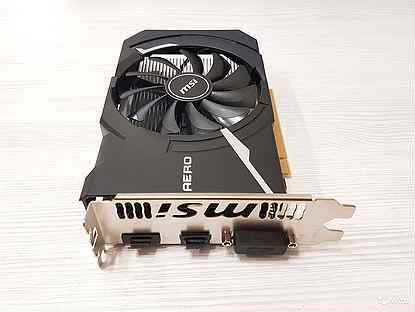 8
8
 3
3
 6
6